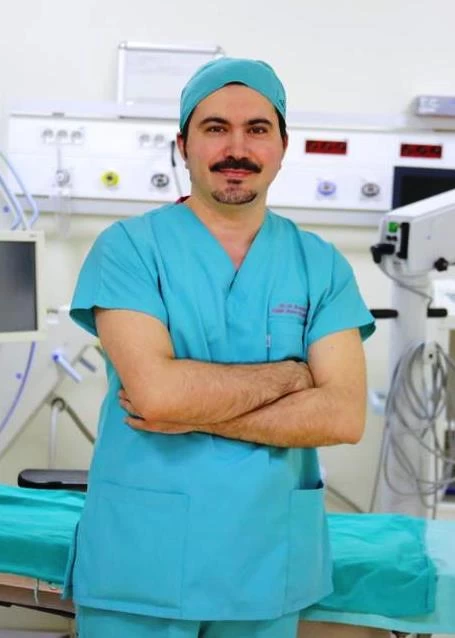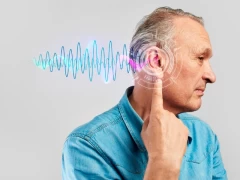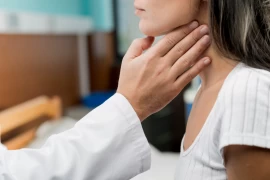
Rhinoplasty (Nose Job) Surgery
- Rhinoplasty (Nose Job) Surgery
- Why Choose Rhinoplasty Surgery?
- Types of Rhinoplasty Surgery
- The Post-Rhinoplasty Recovery Process
Rhinoplasty, also known as nose job in medical terms, is a surgical procedure performed to correct or enhance the shape and appearance of the nose. This surgery, conducted for both aesthetic and functional reasons, aims to improve the balance and proportion of a person's face.
Why Choose Rhinoplasty Surgery?
Rhinoplasty surgery can be chosen for both aesthetic and functional reasons. The reasons for opting for this surgery can vary based on personal and medical needs. Here are some reasons for choosing rhinoplasty surgery:
- Aesthetic Reasons:
- Changing Nose Shape: The goal is to alter a nose shape that does not harmonize with a person's face. The nose may be desired to be smaller, more refined, or more prominent.
- Correcting Nasal Asymmetry: A naturally asymmetric nose or one deformed due to trauma can be made more symmetrical through surgery.
- Straightening Nasal Bridge: Individuals with a high or deviated nasal bridge might opt for this surgery to achieve a more balanced appearance.
- Refining Nasal Tip: A wide or drooping nasal tip can be lifted and reshaped to achieve a more aesthetic look.
- Achieving Nose and Facial Harmony: The aim is to bring the nose into harmony with other facial features.
- Functional Reasons:
- Resolving Breathing Issues: Individuals facing difficulty in breathing due to a deviated septum or other anatomical issues can address respiratory problems through rhinoplasty.
- Repairing Nasal Injuries: Rhinoplasty can also be chosen to correct nasal injuries resulting from trauma.
- Boosting Self-Confidence: Those seeking to feel better about themselves and enhance their self-confidence might feel more satisfied with their appearance after rhinoplasty surgery.
Several crucial factors should be considered when opting for rhinoplasty surgery. These include post-surgery expectations, health condition, choice of surgeon, and the medical necessity of the procedure.
Types of Rhinoplasty Surgery
Rhinoplasty surgery can be performed using various techniques depending on the individual's anatomical features, the purpose of the surgery, and the surgeon's preference. Here are some common types of rhinoplasty procedures:
- Closed (Endonasal) Rhinoplasty: In this method, incisions are made inside the nose, resulting in no visible external scars. The surgeon shapes the nasal bridge and tip by accessing the nose through the nostrils. Since the stitches are within the nose, they are not visible externally. This approach is preferred for minor changes and adjustments and generally has a quicker recovery period.
- Open (Open Approach) Rhinoplasty: Incisions are made under the nasal columella (the tissue between the nostrils). This approach offers the surgeon greater access to the nasal structure, allowing for more detailed procedures. The nasal skin is lifted, the necessary adjustments are made, and then the skin is repositioned. Open rhinoplasty might be chosen for more complex revision surgeries or challenging anatomical conditions.
- Revision Rhinoplasty: This surgery corrects dissatisfaction or problems arising from a previous rhinoplasty procedure. It can be performed to make changes following the initial surgery.
- Septoplasty: This procedure aims to correct a deviated septum (the cartilage wall within the nose) to address breathing problems and congestion. It is a functional surgery that may not involve aesthetic changes.
- Nasal Tip Surgery: This involves altering or refining the shape of the nasal tip for improved appearance. The tip can be lifted, narrowed, or reshaped to achieve a more aesthetic look.
- Non-Surgical Rhinoplasty with Fillers: This non-surgical approach involves making small changes to the nose shape using dermal fillers. However, this is a temporary solution, and its effects may diminish after a certain period.
Since each individual's nasal structure is unique, the most suitable method should be determined based on their needs and expectations. An ENT specialist or plastic surgeon will assess the individual and determine the most appropriate rhinoplasty technique.

The Post-Rhinoplasty Recovery Process
The post-rhinoplasty recovery process can vary based on the type of surgery, individual healing speed, and body response. Generally, following the doctor's recommendations is crucial during this period. Here's a general outline of the post-rhinoplasty recovery process:
- First Few Days After Surgery:
- Rest: Resting is important during the initial days after surgery. Sleeping with your head elevated can help reduce swelling and edema.
- Splint or Cast: A splint or cast is placed by the surgeon to maintain the shape of the nose and support the healing process. These materials are typically removed after about a week.
- Pain Management: Pain and discomfort might be experienced post-surgery. Pain relievers recommended by your doctor may be necessary.
- First Week:
- Swelling and Bruising: Swelling and bruising are normal during the first few days. They will gradually subside over time.
- Avoiding Touch and Face Washing: Wash your face as instructed by your surgeon and avoid touching your nose.
- Diet: Opt for soft and liquid foods. Limiting salt intake can help reduce swelling.
- First Few Weeks:
- Physical Activity: Avoid strenuous physical activities for the first few weeks after surgery. Rest as per your surgeon's recommendation.
- Suture and Splint Removal: Sutures can be removed and the splint or cast can be taken off according to your surgeon's advised timeframe.
- Swelling and Bruising: Swelling and bruising will diminish over time, although complete healing might take a few months.
- Healing Process:
- Visible Results: You'll be able to see better results after complete resolution of swelling and bruising. The time for this can vary from person to person.
- Follow-Up Checks: Your surgeon will conduct regular check-ups and follow-ups to monitor your healing progress.
Keep in mind that the post-rhinoplasty recovery process can differ for each individual. Following your doctor's recommendations, maintaining a proper diet, getting adequate rest, and staying in communication with your doctor are essential for a successful recovery. If you have any questions or concerns, don't hesitate to reach out to your doctor.






